Pernille Ripp's Blog, page 7
October 3, 2021
#PernilleRecommends – My Favorite Reads May through September, 2021
If you follow me on Instagram, you may know that I recommend a lot of books on there, in fact, it is the number one thing I use my account for. Perhaps you follow me there? If you don’t, or if you missed some, I figured a blog post to pull them all together would be helpful. That way you can see what I have read and loved, see what age groups they may work and order some books yourself. I don’t post all of the books I read, just the ones I love so much that I want to share them with others. I use the hashtag #pernillerecommends and they get cross-posted to Twitter as well if you want more than 1,000 book recommendations. Either way, here are the books I loved and shared from May until today!
Picture Books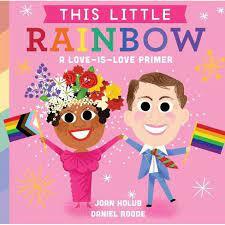


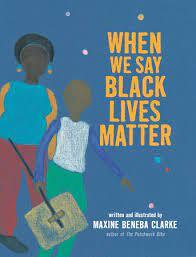
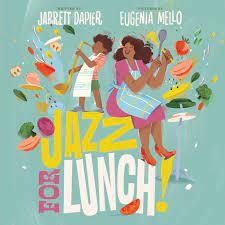

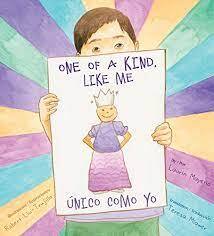
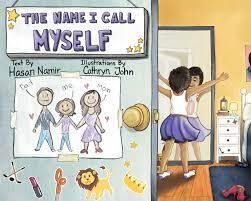

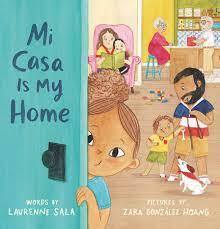
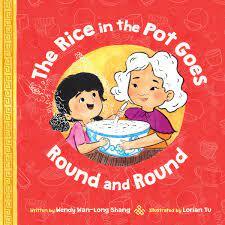

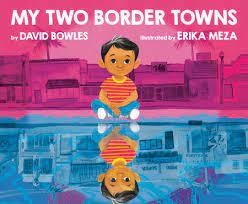

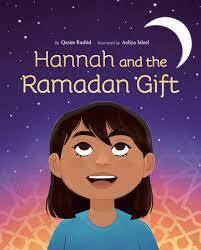
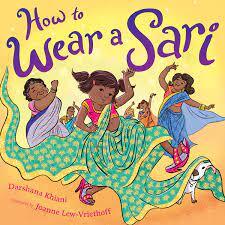


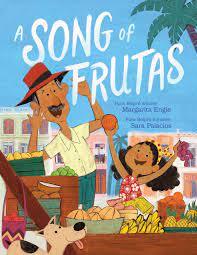

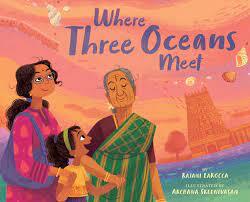
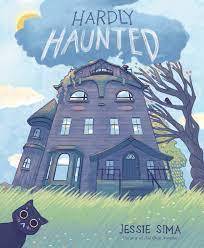
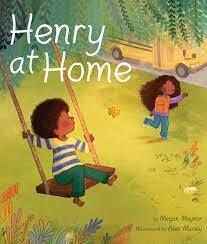

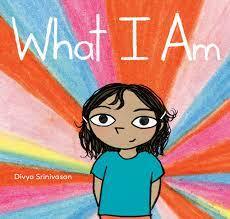




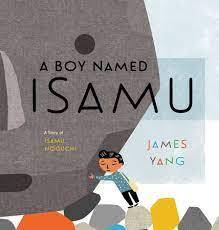

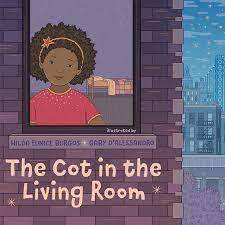


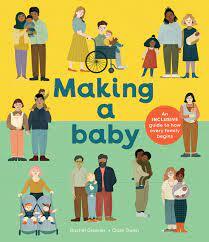
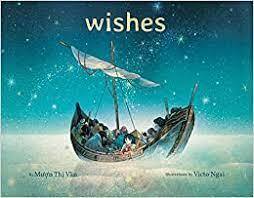
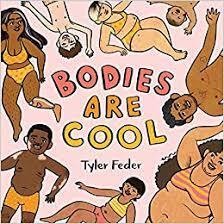
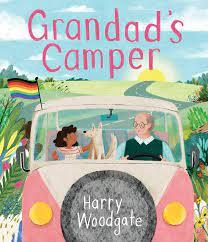
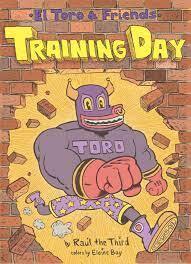
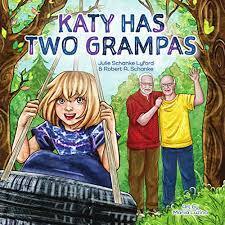
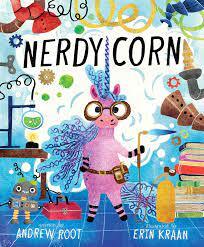
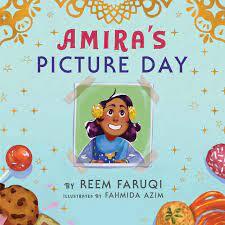

 Early Readers
Early Readers
 Middle Grade
Middle Grade
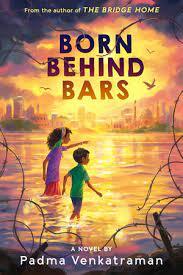
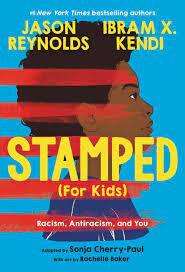


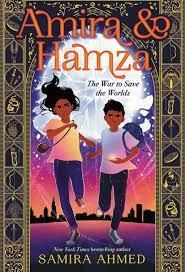




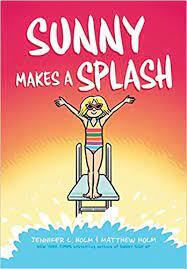
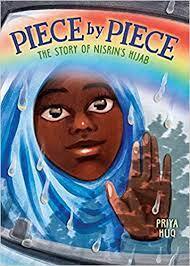





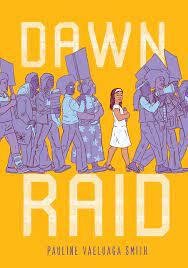
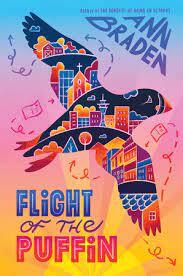
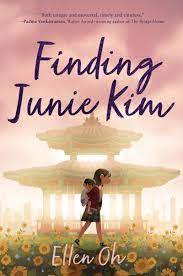
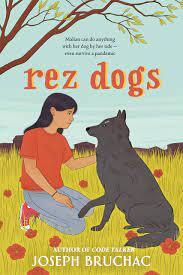



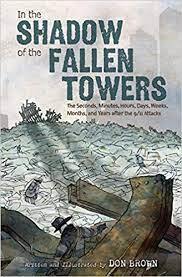
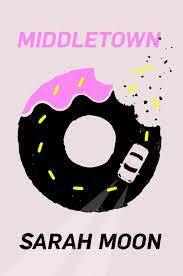 Young Adult
Young Adult
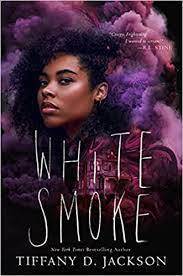









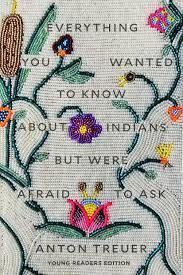


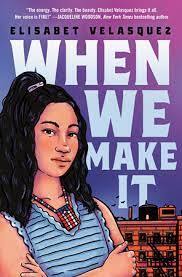

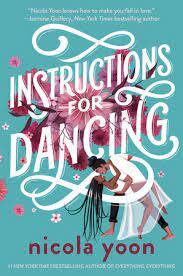
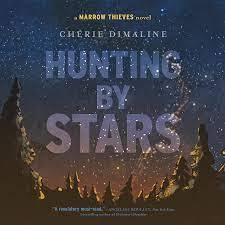

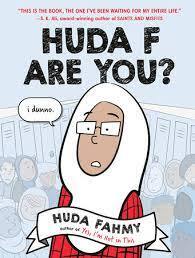 Professional Development
Professional Development


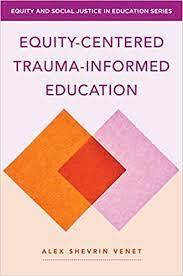
Which books have you read and loved? I am already excited to share all of the October reads I am loving over on Instagram. Happy reading!
As always, I am also curating lists on Bookshop.org – a website who partners with independent bookstores to funnel book purchases through them, if you use my link, I get a small affiliate payout.
I am excited to be heading out on the road again to be with other educators in-district or at conferences, while continuing my virtual consulting and speaking as well. If you would like me to be a part of your professional development, please reach out. I am here to help.
September 21, 2021
Spending Time in the Small Moments
I have been spending time in the small moments lately in class. The moments where I get to connect with a student one-on-one, small peeks into who they are, what they are willing to share. I find myself speaking more quietly, smiling bigger so that hopefully my eyes can show how grateful I am for their time, their words, their trust. And we have slowly been building some sort of us, a community pieced together by the stories we share and don’t share.
At the cornerstone of what we do is our reading conference. Not just because these small conversations allow me to get to know my students as readers, but because they allow me to get to know them, period. A greeting, a question about how 7th grade is going and what is happening in their life and then we are off, speaking about who they are as readers, what they are working on and the motivation they have behind the work they are doing. They tell me proudly of successes, sometimes shyly of perceived failures and I reassure as much as I can; it’s okay if you haven’t read any books in a while, it’s okay that you don’t like reading ( we will work on that together), it’s okay if you have never found a book, if your brain is loud when you read, if you just don’t have the energy. It’s okay if you just read graphic novels, if you dislike magical fantasy, if you have yet to find an author that speaks seemingly just to you. It’s okay, it’s okay, it’s okay I repeat as a way to hopefully make them believe it. To help them know that they are who they are and I am so glad they are here in our classroom together. However they showed up, whoever showed up. We are on a journey, a journey!, and wherever you are is where you will start.
I have to remind myself of this journey as I feel the silent urge to move faster. To get further. To teach more. To “catch up.” Who are we supposed to catch up to anyway? I have to remind myself to stay in the small moments, to use my eyes to express what the mask hides. To reach out in all the ways that we have at our fingertips, to assure and to ensure. To share my own stories as an invitation for them to share theirs. To handle their words with the care they deserve, to handle them with care.
And so I write down notes and I ponder how can I serve these kids best? How can I help them pick up their pieces of their reading journey and thread together a new pattern, one that continues the successes that they have, one that mends their perceived shortcomings so that they can see that no matter what they carry into the classroom, they are readers. Because so many of them don’t see that. So many of them have convinced themselves that because they do not like reading, then they are not readers. They dismiss their own habits of consumption of text. They scoff at the one book that they did like, seeing it as fluke rather than a goal that they accomplished. They fail to see their own journey as readers as the testament to their own determination that it really is. These kids, our kids, who see themselves as kids who hate reading don’t even recognize their own strength. How still showing up into a space filled with books, how still book shopping despite the many books they have tried, how still trying just one more book is nothing but resilience on display. Is everything I hope every reader has; perseverance to keep trying despite how awful it might have been. To have hope in books. To have hope in themselves. To have hope in our year together.
And so I will stay in the small moments, in weighing how I speak, how I read the room. How I am paying attention to the subtle shifts in dynamics and the subtle shifts in trust. In finding time for all of the conversations, not just for me but for them as well as we build this year together. Their words are gifts, no matter how they are spoken. These kids are gifts, no matter how they show up. Read on. Speak on. Dream on.
I am excited to be heading out on the road again to be with other educators in-district or at conferences, while continuing my virtual consulting and speaking as well. If you would like me to be a part of your professional development, please reach out. I am here to help.
August 6, 2021
Where Am I Sharing Ideas These Days?
You may have noticed that I have not been sharing as much on this blog as of late. While there is a variety of reasons for it including the death of my father, the school year planning starting, and just trying to not work as much as I have in previous years, I am still actively sharing ideas, just in other formats.
So where can you find more ideas from me these days?
Conferences – I am so excited to be back out with school districts, professional organizations and conferences, whether in-person or virtual. While I continue to teach fulltime in 7th grade and have no plans for changing that, I am able to take some time to go and coach other educators and also speak on any of the work we do. In the next few months, I will be with educators in New Jersey, Michigan, Illinois, Ohio, and Iceland. If you would like me to be a part of your professional development, please just reach out.
Instagram – I use this platform almost every single day, whether it is to share book recommendations under #PernilleRecommends, snapshots from my classroom or sometimes personal life, or even questions to think about the practices we uphold. This is where I share the most and where you will find the most peeks into the teaching I do. To follow me there, go here.
Twitter – I continue to use Twitter to share questions, share ideas, and also have my posts crossposted from Instagram. This is where you will see longer threads of thoughts as well as links to other incredible resources shared by others. To follow me there, go here.
Facebook – I have a like/hate relationship with this platform but I do love the groups I have created on there for the massive ideas that are shared. Whether it is for the Global Read Aloud or for the Passionate Readers Facebook group, I share classroom documents and unit plans here for the most parts as well as post questions. There are thousands of people in these groups willing to share, join us if you want.
My books – I have written four education books since 2015 and many of my ideas can be found detailed in there. I am currently writing a fifth book as well, which is also taking up a lot of my time when the space is there for it. It is so exciting to dive back into the world of book writing and to get longer ideas down when thinking about how to build reading identity as part of a child’s personal journey. We shall see when it and if it comes out.
Of course, the blog will continue, however, only when I feel the need to write. So until the next idea comes in, see you in the other spaces!
July 21, 2021
One Year Later: My Digital Reading Notebook

A year ago, I shared a digital reading notebook that I would be using with my 7th graders as I prepared for a year of pandemic teaching. The work we normally did by hand would need to find a home digitally as I had no idea just how long I would be teaching virtually, and so I created a collection of tools for students to use in order to continue our work furthering and centering their identity as readers, even as we were far apart.
Now a year later, I was asked whether I would be using the tool with my students again or whether it had been changed, and this post is the answer.
I did update the tool in September of last year as students started using it to streamline it a bit. Here is the updated version. It streamlined some of the pages and cut down the size a bit which helped a lot. I still love the tool, just wish there was a way to use it without it clogging down their computers.
So as of right now, because let’s face it things change all of the time, I will not be using the digital tool in this iteration again, for a few reasons, but the main one being that I am (right now anyway) scheduled to be in person fully with my 7th graders. This means that instead of having a digital tool like this, we can create sections in our notebooks for this work that they can can be shared when needed. This has in the past been easier for students rather than needing to log onto their chromebooks, then wait for the tool to load, then get to the right page etc. Another reason for stepping back to paper is because scrolling through the tool on chromebooks was unwieldy and slowed down our work. Many students wanted to do the work but their computers froze trying to open it up.
However, the work within the pages will still be going on in 7th grade. Everything within this notebook is important to the work we do as we dive into our reading identities and how the emotions and experiences we carry surrounding that shapes the decisions we make with our reading lives. I will just go back to stand alone forms, gathered in their notebooks or in my binder depending on the purpose of it, to do the work.
So where can you find some of these forms as a stand alone form? Their to-be-read list is just the first few pages in their notebook, they write down author, title, and genre so that they can find the book later. I usually have them set aside 4 pages for this. Others can be found via the links below.
The beginning of the year reading survey here can be found here
The initial reading goal and reflection sheet can be found here.
The work surrounding “Who Am I as a reader” can be found here. (Google Slides or paper copy)
While these first few surveys and goal exercises are just the beginning, they provide me with an invitation into a conversation even if they don’t write much because if a child writes “IDK” for most answers, that tells me something about them as a reader, if a child doesn’t want to share anything that tells me something about them as a reader.
As I dream about the school year to come, I am excited to continue our work surrounding reading identity and hopefully help students protect or cement a positive relationship to reading. I have seen the difference this work does, I have seen it impact kids in thoughtful ways as they start to understand and work with the experiences they have had as a readers and chart new courses. Not just because of these forms or the survey questions I ask, but because of the conversations and subsequent actions that they lead to.
To see more about the reading conferring I do with students, please see this post.
I am excited to be heading out on the road again to be with other educators in-district or at conferences, while continuing my virtual consulting and speaking as well. If you would like me to be a part of your professional development, please reach out. I am here to help.
June 30, 2021
Our Reading Conferring Sheet
One of my most successful ways in establishing trust and urgency with my 7th grade students and their reading choices is through our one-one-one conferring time. This established time happens during our independent reading time, every day for 20 minutes we start class with this self-selected reading time where every child is invited to fall into the pages of a book. It is the cornerstone of much of our continued work together and allows me a peek into who how they see themselves as readers, as well as the work they want to undertake.
Every conference is five to seven or less minutes after the initial one, that means that I usually can meet with three students every day. With class sizes ranging between 25 and 29 kids, this gives me a chance to meet with every student once every three to four weeks depending on what else I might need to help with during their independent reading time. When I taught 45 minute classes, it took longer as we only had 10 minutes of self-selected reading to start the class with.
I always take notes while I meet with them, it is to help me remember what we discussed, help me support their pathway and also keep track of who I am meeting with, I usually meet with them alphabetically because every child deserves a reading conversation and they can always see what I write down. I don’t want any child to wonder what notes I am taking and worry about that for some reason.
The conferring note-taking sheet I use changes as I think about its use further every year, so if you like this current version make sure you make a copy of it because inevitably it will change.
 The whole sheet
The whole sheetThe top portion of the sheet is dedicated to when we meet for the very first time, while my students fill in an initial reading survey which offers me a glimpse into their thoughts of who they are as readers, it is really not until I sit down with them and get to know them that we start the work. After all a survey is just an invitation but a conversation is where we can start to explore their identity if they feel comfortable to do so.
 The top portion
The top portionThe different components mean…
Confer by me or them – where would they like to have these conversations? I want to respect their boundaries and make them feel as comfortable as I can as we work to establish trust. Book reading and rank – What’s the title of their current book and how would they rank the current book they are reading on a scale form 1 to 10. Goal – What is the initial goal they have set for themselves as readers in the 7th grade reading challenge? Why – Why have they set this goal, this is an important conversation to have because many of my students set a goal to just make the teacher happy, not a goal that they actually care about.Last Year – What did their reading lives look like the previous year?Progress – By the time we meet they have been working on their goal for a few days, how has it been going?Hard about reading – what do they find difficult about reading?The subsequent sections are shorter, I take fewer notes in order to be able to meet with students more frequently. Of course, if a child needs more time then we take it.
 Subsequent sections
Subsequent sectionsSome of the components remain the same, but the new ones are…
Read next – Do they have ideas of what to read next? I so often find that the vulnerable readers I teach have few ideas for what to read next and then spend an extraordinary amount of time trying to find a new read, this question will allow me a peek into their process and help them start book shopping before they finish or abandon their current book. What are you working on as a reader – what is the goal they have been working on? Progress – How has it been going?Next step OR how is this challenging you – What are next steps they can take, what are next steps I can help them with and/or how does their current reading goal challenge them? What did I learn about this person today? It is vital to me that I leave with a deeper understanding of who they are as a person and not just about reading, this question reminds me of that.While this conferring sheet is only a small sliver of the work that happens all year as they explore and develop their reading identity further, it serves as a conversational touchpoint that reminds us of the goals we have, the work we need to do, and who we are as human beings in our classroom. While some kids are eager to share their journey as readers, others are much more hesitant or fully unwilling and I respect that as well. After all, they don’t know me yet so they have no reason to trust me. We then take the time needed to develop our relationship and continually invite them into this conversation. It takes patience and dedication but every child is worth it.
I am excited to be heading out on the road again to be with other educators in-district or at conferences, while continuing my virtual consulting and speaking as well. If you would like me to be a part of your professional development, please reach out. I am here to help.
June 12, 2021
Using Oral Storytelling Kits with Middle Schoolers
A few years ago I traveled to do a day of learning with passionate educators in Maple Ridge/Pitt Meadows in British Columbia. After flight cancellations and changes in airports, Denise Upton, one of the district’s helping teachers, graciously agreed to pick me up and take care of me during the stay. While together, she told me excitedly about Story Workshop, oral storytelling grounded within playful literacy, that they were doing with children as part of their literacy approach. She shared all of the work that they did with students in order to give them natural materials to manipulate and create stories with before they ever sat down to write. She spoke of Indigenous oral storytelling traditions and how they were working on bringing the rich traditions of the peoples’ whose land their school buildings sat on and whose tribal members were within their school population back into the classrooms as a way to honor, teach, and preserve a broader envisioning of writing I was inspired and intrigued. Particularly, after she told me how they were using these material kits with their upper grade levels as well and that the response they had was incredibly positive. After a whirlwind visit, the idea sat in the back of my mind for a while, hoping to someday become something I wanted to do with my own 7th graders.
Well, after a year of teaching unlike any other, after too much screen and not enough togetherness. After once again teaching kids who repeatedly told me how much they hated writing, how writing was so hard, whose sentences were forced across the pages, I decided that some day was now. With a commitment to reconsider every unit and every idea we build our classroom learning on, taking our writing in a much more tactile and playful direction was exactly what I need right now to get excited about next school year. Hopefully, my incoming students will think so as well.
So with a loose idea of what it was Denise had shared with me, the seeds started to grow; what if I build some oral storytelling kits for kids to use in partnerships, trios, or by themselves before we begin to write? What if I collect natural materials for them to manipulate and play with as they share stories from their own lives and also from their imaginations? Surely someone had done this before?
The answer is yes, many have! None of my ideas shared here are really original but I got so many questions on social media when I shared the kits I was building that I figured a blog post would be nice. If you are learning about Indigenous storytelling, there are so many wonderful resources shared, such as this one. If you google “Loose Parts”, you can see a lot of information. If you follow the work of Angela Stockman, she has been sharing so many ideas for years and is truly inspirational. If you are trained within Montessori, you know this work. If you know Reggio Emilia principles, then you know these ideas. If you have worked with younger grades, you probably do this already. There are so many resources out there, so dig in and learn.
My purpose for these kits are to get kids talking more before they write out stories, whether they be stories from their own lives or stories they invent. I want them to build scenes or entire stories together or individually depending on the exploration we are doing. I want them to play with their imagination and ot be forced into written production as quickly as we have done in the past, I want them to build community through story, I want them use their hands more. I want English to have more joy and I want it to authentically fit into the identity-centered work we already do in our literacy explorations.
Building the KitsI had a million ideas right away and needed a way to ground them so I started by focusing on ideas for what to put in them and also building the kits to give me a more tangible sense of what it would look like. I hate so much that educators are almost always forced to purchase things out of their own pocket, so I spent school budget money to purchase the toolboxes. I bought two different kinds, five altogether, so that I can share them between tables – I typically teach 28 students at a time, so I wanted to make sure that I had enough kits to share materials between 10 different groups if need be. I also needed the kits to not take up too much space in our classroom, be easy to store and move, as well as have different size compartments.

All the boxes are removable in both kits so we can spread them out on the different tables as needed.
Once I had the boxes, then I got more serious with my materials. I had a few guidelines I wanted to follow:
Natural materials whenever possibleDifferent sizes of things to useMaterial that doesn’t necessarily look like “one” thing in order for them to be used for many thingsLow cost and easy to replaceThen I wrote a list, there are so many lists floating on the internet but I posted mine to Instagram and got even more ideas as well as a huge “Duh!” moment. Notice on my original list, I have nuts on it. That is not going to work at all for some of my students due to their allergies. After a helpful educator made me see the light, I updated my original list.
I knew that if I felt like spending a ton of money, I easily could just order all of these things but I don’t want to. So, instead I turned to my local Buy Nothing Facebook group and asked if anyone had any materials they could donate. So what you are looking at in the kits above, almost everything is donated from kind strangers or friends who happened to have materials lying around. Amazing!
So right now in the kits I have:
Seashells, all sorts, all sizes.Pine cones – I need to gather more.Small popsicle sticks – they are pointy and I don’t know if I love that.Wine corks that do not have wine labels on them.Small cork buttons.Wood buttons – I bought a giant bag off the internet.Wool yarn in different colors – I have cut lengths of string in a variety of lengths.White rocks. Feathers – I think I may add more of these.I also purchased felt mats in green, gray, and brown for the kids to use as a background. They can use more than one if we have enough left over, again I went with natural tones as a way to center us in nature even if the story takes place in a different setting.
Things I would still like to add:
Glass beads of some sortBeach pebbles for more colorMore corkCinnamon sticksWood slicesAcornsLarge popsicle sticksIdeas for useSo while the kits themsleves are a lovely work in progress and bring me happiness right now as I plan, what matters more than the stuff in them is making space for them to be used with our students. So as I planned for the first two weeks of instruction (I do this in order to be able to walk away for awhile, not because I want to work all summer), I planned with the kits in mind.
My two week plan can be viewed here, but please know that it is so much a work in progress, that some of the ideas in it are my own and others are based off of the incredible work others have kindly shared, and that I have given credit to those whose work I am borrowing from or copying. Please feel free to also borrow or use my ideas, just give credit. The kits will be utilized, hopefully, on the third day of school in an activity where students continue to think of the stories they carry and start to build scenes from their own lives that they then, in turn, share with their peers at their tables. After their initial appearance, they will continue to be integrated into our work as we start our first longer writing exploration; personal narrative. Students can use events from their own lives or springboard events from their own lives into a fictional story.
I also want us to think of how the kits may help us work within the emotions we have tied up with our writing, how we can use them to go deeper into story and how stories can weave us together even when we don’t see eye to eye. I am hoping that as we explore our own identities and how that makes us view and react to others, these tangible items will ground us and make us feel safer within our burgeoning community. I am hoping that having these tactile explorations will bring more playfulness into our classroom, as well as more joy. We will also create expectations of how to use the kits with each other. My main focus for that is to be respectful of the material and of what is shared within their stories, but I will ask the students to also think of how to use the materials, how to clean up in order to preserve the kits, and how to work together. It really all ties into the community work we do throughout the year.
My own children helped me eagerly build the kits and have since then also used them. It has been amazing to see them build scenes, stories, and whole worlds using just these materials and then walking me through their stories that they now see so clearly. Even my son who has repeatedly that he hates writing has been using the kits and telling me his stories. I hope I will see the same willingness to try in my 7th graders.
So there you have, my entry in oral storytelling kits. I will share more ideas as I use them with students, but for now, the kits are being built, the ideas are coming together, and the work is just beginning. Have you used kits like this before? Do you have any ideas or questions? I would love to hear your thoughts.
I am excited to be heading out on the road again to be with other educators in-district or at conferences, while continuing my virtual consulting and speaking as well. If you would like me to be a part of your professional development, please reach out. I am here to help.
May 26, 2021
Home Adults: Ideas for Creating Great Summer Reading Experiences
I know many of us educators (and those at home) have been working hard all year to try to cultivate or protect a love of reading in our learners despite the incredible obstacles we have faced. Now with warmer temperatures and summer beckoning for the Northern Hemisphere comes the real test; will kids keep reading over the summer? Is what we did enough? Did we lay enough of a foundation, get them excited, get them hooked so that the next few weeks or months will not put them in a reading drought? While time will truly be the judge of how the work might pay off, here are a few ideas that may help depending on the age of the learner.
Every year we send home an email to our home adults to offer them ideas for helping their child stay reading over the summer. This gives us a chance to also highlight our summer check out programs run by our amazing school library staff, and share that their to-be-read lists that they have been cultivating will also be sent home. I have shared the email here before, but wanted to offer the ideas up again in a blog post as well for easy sharing.
So if you are a “home adult” as we call it, someone who is in charge of children outside of school, here are a few ideas for keeping kids connected to reading throughout summer. What other ideas do you have?
From the email homeAs you may know, one of our main focuses in 7th grade is to help promote fun-filled independent reading throughout the year for all kids. We do this through independent reading time every day, practicing full choice in books all year, establishing joy-filled reading communities, and providing access to books for all kids. Now that summer is upon us, we wanted to offer up a few ideas to hopefully help your learner continue to read over the summer even when school is out.
Why is summer reading important?
From the Dept of Education, “Numerous studies indicate that students who don’t read or read infrequently during their summer vacation see their reading abilities stagnate or decline. This effect becomes more pronounced as students get older and advance through the school system.”
Every year, about a third of our students report not reading a single book over the summer while another third report reading just one. We see this then play out in their reading abilities and relationships as they come ready for 8th grade and beyond. Simply put, when children don’t read over the summer we see a decline in their reading skills which means that they start the next year at a deficit.
How can we help?
We want your learner to have awesome reading experiences this summer and we want to make it easy for them, this is why our school library will have summer check out again this year. Every learner, who is returning to Oregon Middle School for 8th grade, can check out books before school even ends and then also throughout the summer as the library will have open dates throughout the summer.
We will also send home your learner’s to-be-read list via email if they have one. This is the list we have worked on all year and it should hold many title ideas for your child as they try to find their next great read.
How can you help?
While we know many of you already promote summer reading – thank you! – here are a few more ideas on helping home adults make great summer reading plans:
Have a to-be-read list. All year we have cultivated ours, trying to add as many titles as possible so that when the students leave our classrooms they have something to help guide them when they are either at the library or at the bookstore. This is especially important for our “vulnerable” readers, those who have just discovered that books and reading may be for them after all and need a constant diet of amazing books. But really all kids should have one, not just some. Our students have been working on theirs and will share it in the upcoming week with their home adults, so reach out and ask your learner’s teacher to see if they have one made. Even if the school has not created a to-be-read list it is not too late to make one! Browse the displays at the library or at the bookstore if they are open or look for ideas on online for great summer reading for your child’s age group and write it down somehow. Keep the list on you because you never know when you come across an opportunity to find more books. I also share a lot of recommendations on my Instagram.
Make it social. I love reading a great book and then talking to others about the book or even better passing the book on to them. Make reading a social aspect of your summer; have reading “parties” where kids can discuss books in a safe way, create a book swap with other families, scour garage sales for long-lost favorites. Offer up yourself to read with your learner or get more than one copy of a book (if you have access to them) so that others may join in the reading. Too often as home adults we think we should read all of the books our child is reading and while that can be a fun bonding experience, it may be more powerful if you can get a friend of your child to be a reading partner.
Visit places where books are present. We go to the library a lot; when it is too hot and the pool is not open, when it is stormy, when we are tired. We also go to our local bookstore and browse safely. Accessing book, touching books, getting excited about books and anything that we can read is vital to keep the desire alive. Sign up for the public library’s reading challenge or make it a routine every week to go and get new books if you have transportation. Spend a few hours reading while you are there. If there is no library or the library is not accessible to you, reach out to your learner’s school, is there a way they can lend you books? Our school library does a summer checkout before the end of the year, as do I. If you are not able to go places where there are books, ask your child’s teacher if you may borrow a big stack of books from them if you promise to bring them back. I have often lent books to families over the summer as a way to help them keep reading.
Read aloud. Many home adults assume that their older kids do not want to be read aloud to, and yet, my students tell us repeatedly how much they miss it. So why not find a great book and take some time to experience the book together?
Use audiobooks. I love that I can borrow audiobooks from our library – both the collected stories of Hans Christian Andersen and many other series have captured our imagination for months. When your children are in the car, put on an audiobook. Have a copy of the book ready if anyone wants to keep reading and you have reached your destination. With all of the research coming out correlating audio books with further reading success this is a winning situation.
Find great books. Get connected online to communities like #Titletalk, #BookADay, #WeNeedDiverseBooks, or Nerdy Book Club to get ideas of what to read next. I am constantly adding to my wish list due to these places. Use the professionals like librarians, booksellers and teachers. Also, ask other home adults what their kids are reading, create a Facebook page to share recommendations or simply use you own page or whatever social media platforms you use, anything to find out what great books are available.
Create a routine. We read every night and sometimes even in the morning (as well as throughout the day but then again we may be slightly book-obsessed). Helping your child create a routine where reading is a natural part of the day mean that they will create ownership over the habit, thus (hopefully) inspiring further reading. I encourage my students to read first thing in the morning before they get up or as the last thing they do before falling asleep. Whatever the routine may be, sit down and read yourself, it is vital for all of our children to see their home adults as readers.
Allow real choice. I have seen some home adults (and schools) require learners to read certain books over summer, but summer is meant to be guilt-free reading. Where we reach for those books we cannot wait to read because they will suck us right in, where we fill up our reserves so we can perhaps finally tackle that really challenging book that we have been wanting to read. Where we explore new books because we want to. Too often rules and expectations infringe on the beauty of summer reading; falling into a book’s pages and not having to come up for air until it is done. That also goes for reading things that may be “too easy” or “too hard” – I devour picture books, graphic novels and all thing “too easy” in the summer, as well as trashy beach reads and Danish crime mysteries. I refuse to feel guilty about my choices in reading, because that is never what reading is about. And that extends into the year of reading I do when school is back in session as well.
Have books everywhere. Again, this depends on how many books you have access to, but leave books wherever your kids go. I have books in the car, in their rooms, in the kitchen, living room, etc. That way the books seem to fall into their hands at random times; stopped in traffic, quiet time before lunch, a sneak read before falling asleep. It is a luxury to have books in our house and so we try to make them as visible as possible. Again, ask your child’s teacher if they have books you can borrow if you do not have the opportunity to build your own collection.
Allow and celebrate abandonment, but ask questions. When a child abandons a book, this is a great thing. They are learning that this book is not for them and they can use their energy for a book that will be for them. But ask questions so that they may think about what type of book they might like. So they can think about what type of reader they are and want to be. Make sure that there are other books they want to read as well so that they can keep trying to find great books.
Explore new books together. Summer can be a great time to try to push your own habits of reading, as long as it doesn’t feel like a chore. Set a reading challenge, compete against each other if you want, challenge each other to read each other’s favorite books and revel in the shared experience.
Be invested and interested. This does not mean that you ask your child to write reports about what they read, in fact, I would be very careful as to what type of work goes along with reading over the summer beside reading, but do ask questions. Ask whether they enjoy the book or not. What they plan on reading next. Read along with them or beside them. Make reading a part of your life so it can become a part of theirs.
Keep it fun. Too often, especially if our child is not a well-developed reader, we can get rather nervous as home adults and think that we must keep them on a regimented reading program at all costs. That we must have them write about reading or track it somehow. Have them read, yes, but keep it light and fun. The last thing we want to do is to make reading a worse experience for them or adding more stress to your family.
What other ideas do you have?
I am excited to be heading out on the road again to be with other educators in-district or at conferences, while continuing my virtual consulting and speaking as well. If you would like me to be a part of your professional development, please reach out. I am here to help.
May 24, 2021
Some Favorite Picture Books to Highlight LGBTQ+ Experiences
As June rolls nearer and we get ready to celebrate pride in my own house, I have been pulling books from our classroom collection to put on display. While many of these books have already been booktalked, read aloud, or shared in other ways in our time together, there is something beautiful about seeing a whole wall of books all centering within the LGBTQ+ experience in some way. Especially because this year, it finally feels like there are more books than before. Like this year, books written by and about LGBTQ+ people are not just coming out once in a while but are finally starting to get a broader publication and inclusion within schools. It is something that brings me joy and hope, even if I would still love to see a much broader emphasis on #OwnVoices stories within mainstream publishing
As I pulled books for display, I asked on Instagram whether a blog post would be helpful to others and the answer was yes! So here are the picture books being displayed and read in our 7th grade classroom as we celebrate LGBTQ+ Creators and Authors, characters, and also books that break gender stereotypes. I want to reiterate and emphasize that it is not enough to put books such as these on display, they need to be read, discussed, and woven into the work we already do because these books all lead into discussion about identity, who we are, who others are and how we view the world. These books should not just be pulled out once a year but instead be a naturally integrated part of our curriculum. But I hope this gives you a good place to start if you are looking to add more titles, new and old.
 Our Subway Baby by Peter Mercurio and illustrated by Leo Espinosa
Our Subway Baby by Peter Mercurio and illustrated by Leo EspinosaSome babies are born into their families. Some are adopted. This is the story of how one baby found his family in the New York City subway.So begins the true story of Kevin and how he found his Daddy Danny and Papa Pete. Written in a direct address to his son, Pete’s moving and emotional text tells how his partner, Danny, found a baby tucked away in the corner of a subway station on his way home from work one day. Pete and Danny ended up adopting the baby together. Although neither of them had prepared for the prospect of parenthood, they are reminded, Where there is love, anything is possible.
 From Archie to Zack by Vincent X. Kirsch
From Archie to Zack by Vincent X. Kirsch“Archie loves Zack!”
“Zack loves Archie!”
Everyone said it was so.
But Archie hasn’t told Zack yet. And Zack hasn’t told Archie. They spend just about every minute together: walking to and from school, doing science and art projects, practicing for marching band, learning to ride bikes, and so much more.
Over the course of a few months, Archie tries to write a letter to Zack to tell him how he feels: “From A to Z.” None of his drafts sound quite right, so he hides them all away. One by one, Archie’s friends (Zelda, Zinnia, and Zuzella) find the letters . . . but they know exactly whom they’re meant for.
 Call Me Max by Kyle Lukoff and illustrated by Luciano Lozano
Call Me Max by Kyle Lukoff and illustrated by Luciano LozanoWhen Max starts school, the teacher hesitates to call out the name on the attendance sheet. Something doesn’t seem to fit. Max lets he know the name he wants to be called by–a boy’s name. This begins Max’s journey as he makes new friends and reveals his feelings about his identity to his parents.
 I’m Not a Girl by Maddox Lyons and Jessica Verdi illustrated by Dana Simpson
I’m Not a Girl by Maddox Lyons and Jessica Verdi illustrated by Dana SimpsonNobody seems to understand that Hannah is not a girl.His parents ask why he won’t wear the cute outfits they pick out. His friend thinks he must be a tomboy. His teacher insists he should be proud to be a girl.But a birthday wish, a new word, and a stroke of courage might be just what Hannah needs to finally show the world who he really is.
 My Rainbow by Trinity and DeShanna Neal and illustrated by Art Twink
My Rainbow by Trinity and DeShanna Neal and illustrated by Art TwinkWarm morning sunlight and love fill the Neal home. And on one quiet day, playtime leads to an important realization: Trinity wants long hair like her dolls. She needs it to express who she truly is.So her family decides to take a trip to the beauty supply store, but none of the wigs is the perfect fit. Determined, Mom leaves with bundles of hair in hand, ready to craft a wig as colorful and vibrant as her daughter is.
 I Am Perfectly Designed by Karamo Brown and illustrated by Anoosha Syed
I Am Perfectly Designed by Karamo Brown and illustrated by Anoosha SyedIn this empowering ode to modern families, a boy and his father take a joyful walk through the city, discovering all the ways in which they are perfectly designed for each other.
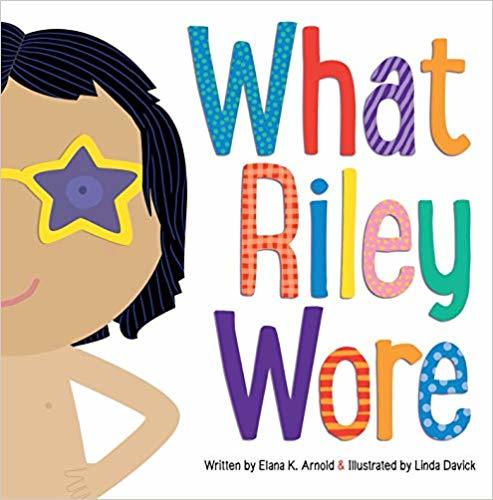 What Riley Wore by Elana K Arnold and illustrated by Linda Davick
What Riley Wore by Elana K Arnold and illustrated by Linda DavickRiley wears whatever clothes feel right each day. On Monday, Riley feels shy and wears a bunny costume to school. On Tuesday, a scary trip to the dentist calls for a super hero cape. For a trip out with Otto and Oma, a ball gown is the perfect outfit.
This charming picture book is a gentle exploration of self-expression and source of encouragement for being true to oneself despite the expectations of others.
 Sparkle Boy by Leslea Newman and illustrated by Maria Mola
Sparkle Boy by Leslea Newman and illustrated by Maria MolaCasey loves to play with his blocks, puzzles, and dump truck, but he also loves things that sparkle, shimmer, and glitter. When his older sister, Jessie, shows off her new shimmery skirt, Casey wants to wear a shimmery skirt too. When Jessie comes home from a party with glittery nails, Casey wants glittery nails too. And when Abuelita visits wearing an armful of sparkly bracelets, Casey gets one to wear, just like Jessie. The adults in Casey’s life embrace his interests, but Jessie isn’t so sure. Boys aren’t supposed to wear sparkly, shimmery, glittery things. Then, when older boys at the library tease Casey for wearing “girl” things, Jessie realizes that Casey has the right to be himself and wear whatever he wants. Why can’t both she and Casey love all things shimmery, glittery, and sparkly?
 What Are Your Words by Katherine Locke and Illustrated by Catherine Passchier
What Are Your Words by Katherine Locke and Illustrated by Catherine PasschierWhenever Ari’s Uncle Lior comes to visit, they ask Ari one question: “What are your words?” Some days Ari uses she/her. Other days Ari uses he/him. But on the day of the neighborhood’s big summer bash, Ari doesn’t know what words to use. On the way to the party, Ari and Lior meet lots of neighbors and learn the words each of them use to describe themselves, including pronouns like she/her, he/him, they/them, ey/em, and ze/zir. As Ari tries on different pronouns, they discover that it’s okay to not know your words right away–sometimes you have to wait for your words to find you.
 Julian at the Wedding by Jessica Love
Julian at the Wedding by Jessica Love Julián and his abuela are going to a wedding. Better yet, Julián is in the wedding. Weddings have flowers and kissing and dancing and cake. And this wedding also has a new friend named Marisol. It’s not long before Julián and Marisol set off for some magic and mischief of their own, and when things take an unexpected turn, the pair learns that everything is easier with a good friend by your side.
 Julian is a Mermaid by Jessica Love
Julian is a Mermaid by Jessica LoveWhile riding the subway home from the pool with his abuela one day, Julián notices three women spectacularly dressed up. Their hair billows in brilliant hues, their dresses end in fishtails, and their joy fills the train car. When Julián gets home, daydreaming of the magic he’s seen, all he can think about is dressing up just like the ladies in his own fabulous mermaid costume: a butter-yellow curtain for his tail, the fronds of a potted fern for his headdress. But what will Abuela think about the mess he makes — and even more importantly, what will she think about how Julián sees himself?
 Peanut Goes for the Goal by Jonathan Van Vess and illustrated by Gillian Reid
Peanut Goes for the Goal by Jonathan Van Vess and illustrated by Gillian Reid Peanut just has their own unique way of doing things. Whether it’s cartwheeling during basketball practice or cutting their own hair, this little guinea pig puts their own special twist on life. So when Peanut decides to be a rhythmic gymnast, they come up with a routine that they know is absolutely perfect, because it is absolutely, one hundred percent Peanut.
 It Feels Good to Be Yourself by Theresa Thorn and Illustrated by Noah Grigni
It Feels Good to Be Yourself by Theresa Thorn and Illustrated by Noah GrigniSome people are boys. Some people are girls. Some people are both, neither, or somewhere in between.This sweet, straightforward exploration of gender identity will give children a fuller understanding of themselves and others.
 Be Amazing: A History of Pride by Desmond is Amazing and illustrated by Dylan Glynn
Be Amazing: A History of Pride by Desmond is Amazing and illustrated by Dylan GlynnDesmond is amazing–and you are, too.Throughout history, courageous people like Marsha P. Johnson, Sylvia Rivera, and RuPaul have paved the way for a safer, more inclusive society for LGBTQ individuals, and it’s thanks to them that people just like Desmond can be free to be who they really are.
 When Aidan Became a Brother by Kyle Lukoff and illustrated by Kaylani Juanita
When Aidan Became a Brother by Kyle Lukoff and illustrated by Kaylani JuanitaWhen Aidan was born, everyone thought he was a girl. His parents gave him a pretty name, his room looked like a girl’s room, and he wore clothes that other girls liked wearing. After he realized he was a trans boy, Aidan and his parents fixed the parts of life that didn’t fit anymore, and he settled happily into his new life.
Then Mom and Dad announce that they’re going to have another baby, and Aidan wants to do everything he can to make things right for his new sibling from the beginning–from choosing the perfect name to creating a beautiful room to picking out the cutest onesie. But what does making things right actually mean? And what happens if he messes up? With a little help, Aidan comes to understand that mistakes can be fixed with honesty and communication, and that he already knows the most important thing about being a big brother: how to love with his whole self.
 Pride: The Story of Harvey Milk and the Rainbow Flag by Rob Sanders and illustrated by Steven Salerno
Pride: The Story of Harvey Milk and the Rainbow Flag by Rob Sanders and illustrated by Steven SalernoIn this deeply moving and empowering true story, young readers will trace the life of the Gay Pride Flag, from its beginnings in 1978 with social activist Harvey Milk and designer Gilbert Baker to its spanning of the globe and its role in today’s world. Award-winning author Rob Sanders’s stirring text, and acclaimed illustrator Steven Salerno’s evocative images, combine to tell this remarkable – and undertold – story. A story of love, hope, equality, and pride.
 Stella Brings the Family by Miriam B. Schiffer and illustrated by Kelly Clifton-Brown
Stella Brings the Family by Miriam B. Schiffer and illustrated by Kelly Clifton-BrownStella’s class is having a Mother’s Day celebration, but what’s a girl with two daddies to do? It’s not that she doesn’t have someone who helps her with her homework, or tucks her in at night. Stella has her Papa and Daddy who take care of her, and a whole gaggle of other loved ones who make her feel special and supported every day. She just doesn’t have a mom to invite to the party. Fortunately, Stella finds a unique solution to her party problem in this sweet story about love, acceptance, and the true meaning of family.
 Prince and Knight by Daniel Haack and illustrated by Stevie Lewis
Prince and Knight by Daniel Haack and illustrated by Stevie Lewis Once upon a time, in a kingdom far from here, there was a prince in line to take the throne, so his parents set out to find him a kind and worthy bride. The three of them traveled the land far and wide, but the prince didn’t quite find what he was looking for in the princesses they met.While they were away, a terrible dragon threatened their land, and all the soldiers fled. The prince rushed back to save his kingdom from the perilous beast and was met by a brave knight in a suit of brightly shining armor. Together they fought the dragon and discovered that special something the prince was looking for all along.
 Tale of the Shadow King by Daniel Haack and illustrated by Stevie Lewis
Tale of the Shadow King by Daniel Haack and illustrated by Stevie LewisOur brave and dashing heroes, the prince and the knight, are happily married and their kingdom is prospering, but soon, a fog of darkness that blocks the sun spreads across their land. They get word that the cause of this is a dark and mysterious Shadow King, and they rush off to find and stop him, but encounter many obstacles along the way. Will they be able to restore the light to their kingdom?
 And Tango Makes Three by Justin Richardson and Peter Parnett, illustrated by Henry Cole
And Tango Makes Three by Justin Richardson and Peter Parnett, illustrated by Henry ColeAt the penguin house at the Central Park Zoo, two penguins named Roy and Silo were a little bit different from the others. But their desire for a family was the same. And with the help of a kindly zookeeper, Roy and Silo get the chance to welcome a baby penguin of their very own.
 Red: A Crayon Story by Michael Hall
Red: A Crayon Story by Michael HallRed has a bright red label, but he is, in fact, blue. His teacher tries to help him be red (let’s draw strawberries ), his mother tries to help him be red by sending him out on a playdate with a yellow classmate (go draw a nice orange ), and the scissors try to help him be red by snipping his label so that he has room to breathe. But Red is miserable. He just can’t be red, no matter how hard he tries
Finally, a brand-new friend offers a brand-new perspective, and Red discovers what readers have known all along. He’s blue.
 Introducing Teddy – a Gentle Story about Gender and Friendship by Jessica Walton and illustrated by Dougal MacPherson
Introducing Teddy – a Gentle Story about Gender and Friendship by Jessica Walton and illustrated by Dougal MacPhersonErrol and his teddy, Thomas, are best friends who do everything together. Whether it’s riding a bike, playing in the tree house, having a tea party, or all of the above, every day holds something fun to do.One sunny day, Errol finds that Thomas is sad, even when they are playing in their favorite ways. Errol can’t figure out why, until Thomas finally tells Errol what the teddy has been afraid to say: In my heart, I’ve always known that I’m a girl teddy, not a boy teddy. I wish my name was Tilly, not Thomas. And Errol says, I don’t care if you’re a girl teddy or a boy teddy What matters is that you are my friend.
 Worm Loves Worm by J.J. Austrian and illustrated by Mike Curato
Worm Loves Worm by J.J. Austrian and illustrated by Mike CuratoYou are cordially invited to celebrate the wedding of a worm…and a worm.
When a worm meets a special worm and they fall in love, you know what happens next: They get married But their friends want to know–who will wear the dress? And who will wear the tux?
The answer is: It doesn’t matter. Because worm loves worm.
 Heather Has Two Mommies by Leslea Newman and illustrated by Laura Cornell
Heather Has Two Mommies by Leslea Newman and illustrated by Laura CornellHeather’s favorite number is two. She has two arms, two legs, two pets–and two mommies. When Heather goes to school for the first time, someone asks her about her daddy, but Heather doesn’t have a daddy. Then something interesting happens. When Heather and her classmates all draw pictures of their families, not one drawing is the same.
 Adventures with my Daddies by Gareth Peter and Garry Parsons
Adventures with my Daddies by Gareth Peter and Garry ParsonsSet off on a series of incredible adventures with an endearing, diverse family as the bedtime stories they read burst into colorful life. Together, the daddies and their little one battle dragons, dodge deadly dinosaurs, zoom to the moon, and explore the world in a hot air balloon, before winding down to sleep in a wonderfully cozy ending.
 Born Ready: The True Story of a Boy Named Penelope by Jodie Patterson and illustrated by Charnelle Pinkney Barlow
Born Ready: The True Story of a Boy Named Penelope by Jodie Patterson and illustrated by Charnelle Pinkney BarlowPenelope knows that he’s a boy. (And a ninja.) The problem is getting everyone else to realize it.
 Daddy and Dada by Ryan Brockington and Isaac Webster, Illustrated by Lauren May
Daddy and Dada by Ryan Brockington and Isaac Webster, Illustrated by Lauren MayHi, I’m Rumi.
Some of my friends have one mom and one dad.
Some have one mom or one dad.
I have two dads. Daddy and Dada.
Daddy sings songs with me. Dada reads me stories.
Every family is different.
And that’s pretty cool.
 Grandad’s Camper by Harry Woodgate
Grandad’s Camper by Harry WoodgateGramps and Grandad were adventurers. They would surf, climb mountains, and tour the country in their amazing camper. Gramps just made everything extra special. But after Gramps died, granddad hasn’t felt like traveling anymore. So, their amazing granddaughter comes up with a clever plan to fix up the old camper and get Grandad excited to explore again.
 Jacob’s School Play: Starring He, She, and They by Ian Hoffmann, Sarah Hoffmann and illustrated by Chris Case
Jacob’s School Play: Starring He, She, and They by Ian Hoffmann, Sarah Hoffmann and illustrated by Chris CaseJacob–star of one of the most banned books of the decade according to the American Library Association–is back in his third book and ready to put on a school play While learning their lines and making their costumes, Jacob’s class finds itself unexpectedly struggling with identity, and what it means to be “he,” “she,” or “they.” Jacob’s School Play is an engaging way to introduce young readers to non-binary people and the pronoun options available to us all. Learning that individuals are more nuanced than how others see them is a developmentally important milestone, and helps foster respect of one’s self and one’s peers.
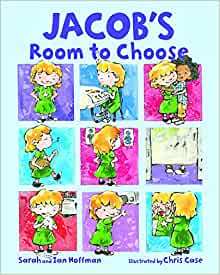 Jacob’s Room to Choose by Ian Hoffmann, Sarah Hoffmann and illustrated by Chris Case
Jacob’s Room to Choose by Ian Hoffmann, Sarah Hoffmann and illustrated by Chris CaseWhen Jacob goes to the boys’ bathroom he is chased out because the boys think he looks like a girl because of the way he is dressed. His classmate, Sophie, has a similar experience when she tries to go to the girls’ bathroom. When their teacher finds out what happened, Jacob and Sophie, with the support administration, lead change at their school as everyone discovers the many forms of gender expression and how to treat each other with respect.
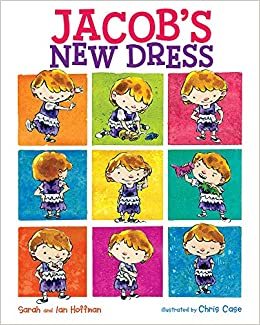 Jacob’s New Dress by Ian Hoffmann, Sarah Hoffmann and illustrated by Chris Case
Jacob’s New Dress by Ian Hoffmann, Sarah Hoffmann and illustrated by Chris CaseJacob loves playing dress-up, when he can be anything he wants to be. Some kids at school say he can’t wear “girl” clothes, but Jacob wants to wear a dress to school. Can he convince his parents to let him wear what he wants? This heartwarming story speaks to the unique challenges faced by children who don’t identify with traditional gender roles.
 Llama Glamarama by Simon James Green and Garry Parsons
Llama Glamarama by Simon James Green and Garry ParsonsMeet a dazzlin’ dancin’ llama who learns to march to the beat of his own drum by strutting his stuff with Pride (and a funky feather boa)!Larry the llama loves to move and groove! But will his friends all disapprove?Larry lives a slow and quiet life at the barn with all the other llamas, just the way they like it. But at night when everyone has gone to bed, Larry loves to dress up in bright costumes and DANCE! He has to hide this from the others, for fear that they won’t approve of his raucous ways. One day, he stumbles upon the Llama Glamarama, a carnival full of music, laughter, and yes-dancing!Will this vibrant celebration give Larry the pride he needs to bring his dance back home?
 Two Grooms on a Cake: The Story of America’s First Gay Wedding by Rob Sanders and illustrated by Robbie Cathro
Two Grooms on a Cake: The Story of America’s First Gay Wedding by Rob Sanders and illustrated by Robbie CathroLong before marriage equality was the law of the land, two grooms stood on a wedding cake with their feet firmly planted in fluffy white frosting. That cake belonged to Jack Baker and Michael McConnell, who were wed on September 3, 1971, becoming the first same-sex couple in America to be legally married. Their struggle to obtain a marriage license in Minnesota and their subsequent appeals to the Minnesota Supreme Court and the Supreme Court of the United States is an under-told story of LGBT history. This beautiful book celebrates the love story of two pioneers of marriage equality for all through the baking of their wedding cake!
 Morris Micklewhite and the Tangerine Dress by Christine Baldacchino and illustrated by Isabelle Malenfant
Morris Micklewhite and the Tangerine Dress by Christine Baldacchino and illustrated by Isabelle MalenfantMorris is a little boy who loves using his imagination. But most of all, Morris loves wearing the tangerine dress in his classroom’s dress-up center. The children in Morris’s class don’t understand. Dresses, they say, are for girls. And Morris certainly isn’t welcome in the spaceship some of his classmates are building. Astronauts, they say, don’t wear dresses. One day when Morris feels all alone and sick from their taunts, his mother lets him stay home from school. Morris dreams of a fantastic space adventure with his cat, Moo. Inspired by his dream, Morris paints the incredible scene he saw and brings it with him to school. He builds his own spaceship, hangs his painting on the front of it and takes two of his classmates on an outer space adventure.
 The Boy and the Bindi written by Vivek Shraya and illustrated by Rajni Perera
The Boy and the Bindi written by Vivek Shraya and illustrated by Rajni PereraIn this beautiful children’s picture book by Vivek Shraya, author of the acclaimed God Loves Hair, a five-year-old South Asian boy becomes fascinated with his mother’s bindi, the red dot commonly worn by Hindu women to indicate the point at which creation begins, and wishes to have one of his own. Rather than chastise her son, she agrees to it, and teaches him about its cultural significance, allowing the boy to discover the magic of the bindi, which in turn gives him permission to be more fully himself.
 My Two Moms and Me (Boardbook) written by Michael Joosten and illustrated by Izak Zenou
My Two Moms and Me (Boardbook) written by Michael Joosten and illustrated by Izak ZenouFamilies with same-sex parents are celebrated in this board book that follows busy moms and their kids throughout their day–eating breakfast, going on a playdate, heading to the pool for a swim, and settling back in at night with a bedtime story and a good-night lullaby. LGBTQ+ parents and their friends and families will welcome this inclusive and cheerful book that reflects their own lives and family makeup.
 Zero Local: Next Stop Kindness written by Ethan and Ava Murrow
Zero Local: Next Stop Kindness written by Ethan and Ava MurrowTrain riders are used to stressful delays on the Zero Local line. But when a new passenger shows gratitude to the driver on their daily commute, tensions begin to ease. Eventually the artistic traveler stops riding the Zero Local line, and discord begins to creep back into the train car. Will the regular passengers find a way to restore the sense of camaraderie they once felt?
 I Love My Purse by Belle Demont and illustrated by Sonya Wimmer
I Love My Purse by Belle Demont and illustrated by Sonya WimmerCharlie loves the bright red purse that his grandmother let him have. One day, he decides to take it to school. His father, then his friends, and even the crossing guard question him about his “strange” choice. But Charlie isn’t deterred. And soon his self-confidence starts to affect those around him. Thanks to Charlie, everyone around him realizes that it isn’t always necessary to conform to others’ expectations. It’s more important to be true to yourself.
 I Am Jazz by Jessica Herthel and Jazz Jennings, illustrated by Shelagh McNichols
I Am Jazz by Jessica Herthel and Jazz Jennings, illustrated by Shelagh McNicholsFrom the time she was two years old, Jazz knew that she had a girl’s brain in a boy’s body. She loved pink and dressing up as a mermaid and didn’t feel like herself in boys’ clothing. This confused her family, until they took her to a doctor who said that Jazz was transgender and that she was born that way. Jazz’s story is based on her real-life experience and she tells it in a simple, clear way that will be appreciated by picture book readers, their parents, and teachers.
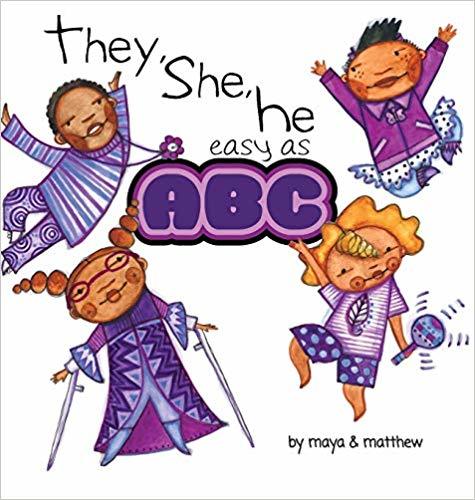 They, She, He, Easy as ABC bY Maya Christine Gonzalez and Matthew Sg
They, She, He, Easy as ABC bY Maya Christine Gonzalez and Matthew SgThey, She, He easy as ABC shows that including everyone is all part of the dance. It’s easy. It’s fundamental. As the dance begins the kids proclaim, “No one left out and everyone free,” in a sing-song rhyme about inclusion. This sets the stage for readers to meet 26 kids showing us their dance moves.
“Ari loves to arabesque. They hold their pose with ease.
Brody is a break dancer. Brody loves to freeze.”
Fast-paced rhyming keeps the flow of text upbeat and rhythmic, and naturally models how to use a wide range of pronouns. There’s no room for stereotypes on THIS dance floor with spirited imagery that keeps names, clothes, hair and behavior fresh and diverse. The combination creates a playful and effortless practice to expand ideas about gender while learning the alphabet and makes being inclusive as easy as A-B-C.
 From Freddie Mercury’s contribution to music and Leonardo da Vinci’s Mona Lisa to James Baldwin’s best-selling essays and more, discover tales of courage, triumph, and determination. Published to celebrate the 50th anniversary of the Stonewall Uprising, this extraordinary book shows children that anything is possible.
From Freddie Mercury’s contribution to music and Leonardo da Vinci’s Mona Lisa to James Baldwin’s best-selling essays and more, discover tales of courage, triumph, and determination. Published to celebrate the 50th anniversary of the Stonewall Uprising, this extraordinary book shows children that anything is possible.
Plum will not stay glum.For as long as she can remember, Plum has lived at the Mary Fitzgerald Orphanage, wishing and hoping for a family. When a sudden snowfall threatens a delivery of presents on Christmas Eve, Plum is determined to save Christmas–even for the kids who laugh at her.Plum’s pure heart grants her an unexpected reward. When she eats a cake left behind by a mysterious magician, she is transported into the Land of Sweets. But Christmas here is threatened, too–by a sourness that is spreading from the center of the land. Plum’s determined to help, and in doing so, she might just find the family she’s always dreamed of, thanks to a good heart–and Christmas magic!

Flags are brilliant and clever works of art and design, and they bring people together under a common banner. This colorful story follows a group of friends who helped dye and sew strips of cloth to create the first Rainbow Flags for the San Francisco Gay Freedom Day Parade in 1978.Led by a young artist named Gilbert Baker, the friends set out to create a flag that people could march behind during the Pride Parade. They knew the flag needed to be bright, in order to be seen by everyone as they marched. It needed to be bold, to lead the crowd. And it needed to be beautiful, like the love celebrated by the parade The result is an iconic flag that has become an international symbol of the gay pride movement.

The boy loves to be naked. He romps around his house naked and wild and free. Until he romps into his parents’ closet and is inspired to get dressed. First he tries on his dad’s clothes, but they don’t fit well. Then he tries on his mom’s clothes, and wow! The boy looks great. He looks through his mom’s jewelry and makeup and tries that on, too. When he’s discovered by his mother and father, the whole family (including the dog!) get in on the fun, and they all get dressed together.

It’s Levi’s first day at a new school, and he’s scared. His father tries to comfort Levi by telling him Big boys don’t cry. Though the father immediately understands his misstep, he can’t find the words to comfort his son, and Levi leaves for school, still in need of reassurance.Fortunately, along his walk to school, Levi sees instance after instance of grown men openly expressing their sadness and fear. His learned mantra, Big boys don’t cry, slowly weakens, and by the time he’s at school he releases a tear. Once he’s there, things aren’t so bad after all, and on his walk home he sees everyone he’s encountered earlier, feeling better now that they expressed their emotions. Upon his arrival home, he finds his father waiting for him on their porch, tears in his eyes. His father is able to admit that he was scared and the two embrace, closer than before.
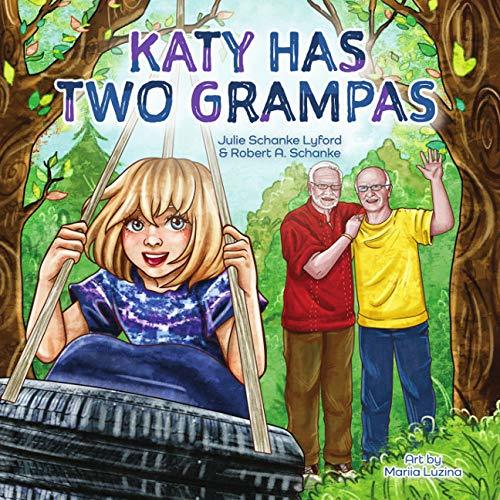
Katy’s school is celebrating Grandparents Day, and Katy is nervous. She doesn’t want to introduce her grandpas in front of the class because she’s worried that nobody will understand her lisp. To make matters worse, when Katy tells her teacher that she’s inviting her married grampas, her teacher thinks she means to say grandma and grandpa instead of grandpa and grandpa. Will Katy build the confidence to speak in front of the class and challenge stereotypes?
There you have it, just a few of our favorites, I know I missed some that I have pulled as well and that there are more to discover too. Please let me know! I have pulled all of these together in an easy to access booklist on Bookshop.org as well.
I am excited to be heading out on the road again to be with other educators in-district or at conferences, while continuing my virtual consulting and speaking as well. If you would like me to be a part of your professional development, please reach out. I am here to help.
May 19, 2021
On Counting Down the Days…Again

An older post from 2017 that still rings true today. I will not do a countdown for many reasons, even if I know how many days I have left. While the belief started as an epiphany of the wildness it was creating, it now rests more solidly in the notion that not every child has a safe place to be during the summer. And while this year of teaching has been like no other and every single person involved with schools deserves a break, to step away from simply making it through the day, I still know that for some being out of school does not allow them to thrive in the ways I hope every child has the possibility to; with food, a bed, adults to supervise and care, learning opportunities, and true rest. We can still celebrate a conclusion of an extraordinarily hard year without counting down the days together. We can still be glad to have the chance to step away to recharge without notching days.
The other day I was asked, “What is the one thing you would tell teachers to stop doing as the end of the year nears?” I needed no time to think because my answer is simple; the countdown.
I used to do the countdown with my students. 20, 19, 18 days left of school. Each day the kids would get more excited. “We are almost out of here, Mrs. Ripp!” They got crazier as the countdown neared the end, energy barely contained, and I loosened the reins, had fun, did less curriculum and more community building. Except the days dragged on. The kids grew restless, and I even started looking at the clock, wishing the day to be over. Was this what teaching the last few weeks of school would always be like?
Six years ago, after a particularly trying week, I had an epiphany – one that many have had before me. I was creating the excited mess unfolding every day in my classroom. My choices in doing a countdown and stepping away from our routines were signaling to the kids that school no longer mattered. That what we were doing no longer mattered. That all they had to do was wait it out and then this, too, would finally be over. As if our students needed any more reminders that school is not a great place to be.
So I stopped the countdown, I went back to teaching and have not looked back since. Because while the countdown may be fun on the surface; another way to show off student accomplishment – you made it through 7th grade! -it also sends a much deeper message; we are done with the year. I am done with you. Is that really what we want to tell our students?
Yet, this is not the only reason I hate the countdown. One year, a child cried under his desk on the last day of school. Inconsolable, I asked him what had happened. Had someone said something to him that I had not caught? Instead, he looked up at me, tears running down his face and said, “Don’t make me leave…I don’t want to go on vacation, I want to stay here.” I cried with him and did the only thing I could, hug him and tell him I would always be here for him if he needed me. Yet, his words have stayed with me all of these years. This child did not look forward to summer. This child faced a summer of unknowns, of food shortage, of not knowing who he would live with, of who would care for him. Summer did not represent a break, but an uncertain future where he had to carry the weight of a society who has very few safety nets for children in poverty and home adults who are trying to survive. Our classroom was his safe space. In our classroom, he felt cared for, knew he would eat, and knew he had people with him. Outside of school that wasn’t always the case. By counting down the days, I was reminding him every day of what was ahead after that last day of school; uncertainty, fear, hunger. None of those messages were what I hoped to convey to my students. None of those messages were what my silly countdown was meant to convey to him. And I am sure there have been others who silently dreaded the end of school, who didn’t show it through their tears but kept it inside or showed in other ways. Who didn’t excitedly tell their peers about all the things they couldn’t wait to do but instead hoped that they could stay together, sta where they were, instead of walking out on that last day of school. So while school certainly doesn’t represent safety for all children, for some it does.
So It is not that I don’t know how many days are left. That I pretend to be clueless as to the end of the year. It is just that I don’t advertise it. I don’t actively remind children how much better summer will be than what we are doing together, than what we have built together. It undermines the entire mission we have had all year of instilling the importance of the work we do. It undermines every single time we have said that school is important, that our community is valuable. I have less than three weeks left and so much still to teach and learn, so many opportunities to keep connecting with kids, to continue to build community and provide resources that will hopefully make a difference in the days ahead. So now, when a child tells me that they are excited about summer, I tell them I am too, but also that I will miss them, that I will miss our learning, that I will miss our classroom. That we have so much learning still to do. That we will work to the very last day because our time is valuable. Because we need every minute we can get. Because what we have built matters and I am sad to see it go. I am sad to see them go. I don’t need a countdown to remind me of that.
I am excited to be heading out on the road again to be with other educators in-district or at conferences, while continuing my virtual consulting and speaking as well. If you would like me to be a part of your professional development, please reach out. I am here to help.
May 1, 2021
Some Favorite Picture Books to Discuss Our Perception of Others
I love using picture books to help my students relate to the world and grow as thinkers and humans and recognizing that our perception of others greatly influences how we treat them as is a great discussion to have repeatedly.
So why not offer up a collection of picture books that does that just. Some are new, some are old, but all carry a powerful message of going beyond our initial assumptions and really seeing others for who they are not what we want or think they are and sometimes even seeing ourself in a new light, too.
What are your favorite reads for this discussion?
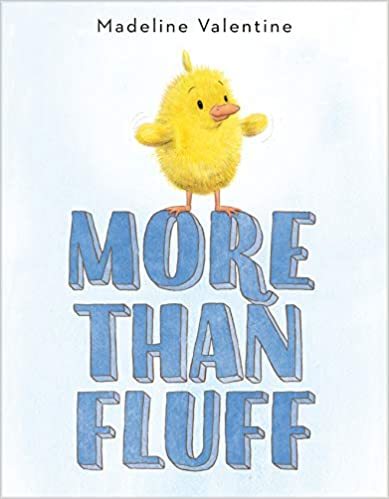 More than Fluff by Madeline Valentine
More than Fluff by Madeline ValentineDaisy happens to be fluffy–she’s a young chick after all. Her friends can’t help but want to pet her, squeeze her, and tell her how cute she is. But Daisy doesn’t want to be hugged or kissed. She’s not just fluff; Daisy has substance! But how can she tell everyone to give her some space without hurting their feelings?
 A Sled for Gabo by Emma Otheguy and illustrated by Ana Ramirez Gonzalez
A Sled for Gabo by Emma Otheguy and illustrated by Ana Ramirez GonzalezOn the day it snows, Gabo sees kids tugging sleds up the hill, then coasting down, whooping all the while. Gabo wishes he could join them, but his hat is too small, and he doesn’t have boots or a sled.
But he does have warm and welcoming neighbors in his new town who help him solve the problem in the sweetest way possible!
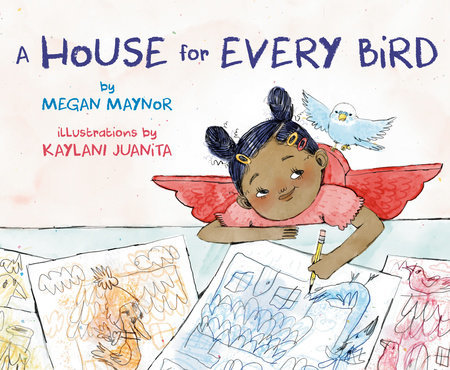 A House for Every Bird by Megan Maynor and illustrations by Kaylani Juanita
A House for Every Bird by Megan Maynor and illustrations by Kaylani Juanita A young artist has drawn birds and bird houses in corresponding colors. Now it’s time to match them up. The blue bird goes in the blue house, the orange bird in the orange house, and so on. But wait! The birds don’t agree with the narrator’s choices and, much to her distress, are rebelling by swapping houses. Can the narrator make the birds see sense? Or is it possible that you just can’t tell a bird by its feathers?
 Milo Imagines the World by Matt de la Pena and illustrated by Christian Robinson
Milo Imagines the World by Matt de la Pena and illustrated by Christian RobinsonMilo is on a long subway ride with his older sister. To pass the time, he studies the faces around him and makes pictures of their lives. There’s the whiskered man with the crossword puzzle; Milo imagines him playing solitaire in a cluttered apartment full of pets. There’s the wedding-dressed woman with a little dog peeking out of her handbag; Milo imagines her in a grand cathedral ceremony. And then there’s the boy in the suit with the bright white sneakers; Milo imagines him arriving home to a castle with a drawbridge and a butler. But when the boy in the suit gets off on the same stop as Milo–walking the same path, going to the exact same place–Milo realizes that you can’t really know anyone just by looking at them.
 I Am a Bird by Hope Lim and illustrated by Hyewon Yum
I Am a Bird by Hope Lim and illustrated by Hyewon YumEvery day, a little girl rides to school on the back of her father’s bike. As they twist and turn through the streets, the little girl spreads her arms like wings and sings her birdsong for all to hear. But when they pass a strange woman in blue who carries a mysterious bag, the girl goes quiet until the woman is out of sight. One day, when they’re running late, the little girl discovers what the woman does with her bag each morning—a surprise that transforms her wariness into a feeling of kinship to be celebrated.
 Laxmi’s Mooch by Shelly Anand and illustrated by Nabi H. Ali
Laxmi’s Mooch by Shelly Anand and illustrated by Nabi H. AliLaxmi never paid much attention to the tiny hairs above her lip. But one day while playing farm animals at recess, her friends point out that her whiskers would make her the perfect cat. She starts to notice body hair all over–on her arms, legs, and even between her eyebrows.
With her parents’ help, Laxmi learns that hair isn’t just for heads, but that it grows everywhere, regardless of gender.
 Norman Didn’t Do It (Yes, He Did) by Ryan T. Higgins
Norman Didn’t Do It (Yes, He Did) by Ryan T. HigginsNorman is a porcupine. Mildred is a tree. Norman and Mildred are best friends. Just the two of them. And only the two of them. But when a surprise pops up, life will never be the same again.
 What Happened to You? by James Catchpole and illustrated by Karen George
What Happened to You? by James Catchpole and illustrated by Karen George
Imagine you were asked the same question again and again throughout your life . . .
Imagine if it was a question that didn’t bring about the happiest of memories . . .
This is the experience of one-legged Joe, a child who just wants to have fun in the playground . . .
Constantly seen first for his disability, Joe is fed up of only ever being asked about his leg. All he wants to do is play Pirates.
But as usual, one after the other, all the children ask him the same question they always ask, “What happened to you?”
Understandably Joe gets increasingly angry!
Until finally the penny drops and the children realize that it’s a question Joe just doesn’t want to answer . . . and that Joe is playing a rather good game . . . one that they can join in with if they can stop fixating on his missing leg . . .
Because children are children, after all.
 They All Saw a Cat by Brendan Wenzel
They All Saw a Cat by Brendan Wenzel The cat walked through the world, with its whiskers, ears, and paws . . . In this glorious celebration of observation, curiosity, and imagination, Brendan Wenzel shows us the many lives of one cat, and how perspective shapes what we see. When you see a cat, what do you see?
 Drawn Together by Minh Lê and Dan Santat
Drawn Together by Minh Lê and Dan SantatWhen a young boy visits his grandfather, their lack of a common language leads to confusion, frustration, and silence. But as they sit down to draw together, something magical happens-with a shared love of art and storytelling, the two form a bond that goes beyond words.
 I’m Not a Girl by Maddox Lyons and Jessica Verdo, illustrated by Dana Simpson
I’m Not a Girl by Maddox Lyons and Jessica Verdo, illustrated by Dana SimpsonNobody seems to understand that Hannah is not a girl.
His parents ask why he won’t wear the cute outfits they pick out. His friend thinks he must be a tomboy. His teacher insists he should be proud to be a girl.
But a birthday wish, a new word, and a stroke of courage might be just what Hannah needs to finally show the world who he really is.
 Where Are You From? By Yamile Saied Méndez (Author), Jaime Kim (Illustrator)
Where Are You From? By Yamile Saied Méndez (Author), Jaime Kim (Illustrator)When a girl is asked where she’s from—where she’s really from—none of her answers seems to be the right one.
Unsure about how to reply, she turns to her loving abuelo for help. He doesn’t give her the response she expects. She gets an even better one.
Where am I from?
You’re from hurricanes and dark storms, and a tiny singing frog that calls the island people home when the sun goes to sleep….
 What Are Your Words? A Book About Pronouns by Katherine Locke and illustrated by Anne Passchier
What Are Your Words? A Book About Pronouns by Katherine Locke and illustrated by Anne PasschierWhenever Ari’s Uncle Lior comes to visit, they ask Ari one question: “What are your words?” Some days Ari uses she/her. Other days Ari uses he/him. But on the day of the neighborhood’s big summer bash, Ari doesn’t know what words to use. On the way to the party, Ari and Lior meet lots of neighbors and learn the words each of them use to describe themselves, including pronouns like she/her, he/him, they/them, ey/em, and ze/zir. As Ari tries on different pronouns, they discover that it’s okay to not know your words right away—sometimes you have to wait for your words to find you.
I am excited to be heading out on the road again to be with other educators in-district or at conferences, while continuing my virtual consulting and speaking as well. If you would like me to be a part of your professional development, please reach out. I am here to help.



